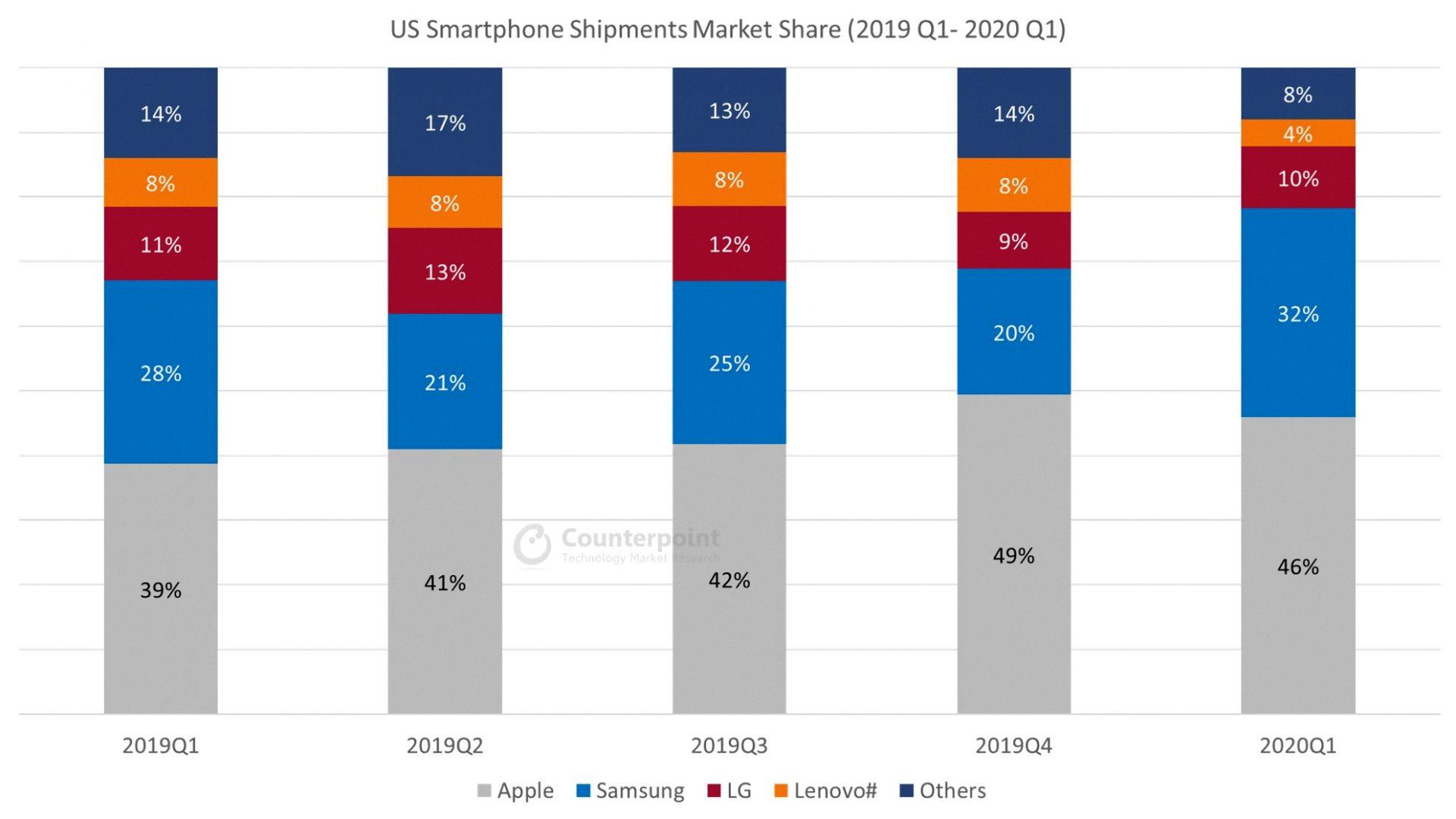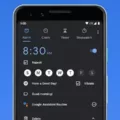Smartphone users have become an integral part of our daily lives, providing us with a wide range of features and functionalities. With the increasing demand for smartphones, it is interesting to analyze the market share of different mobile operating systems. In this article, we will delve into the percentage of iPhone users versus Android users in the USA in 2020.
When it comes to the US market, iPhone has maintained its dominance for quite some time. As of 2020, iPhone holds a significant market share of 57.93%. This means that more than half of the smartphone users in the USA prefer iPhones over other options. The popularity of iPhone can be attributed to various factors, such as its sleek design, user-friendly interface, and the strong ecosystem created by Apple.
On the other hand, Android has been a strong contender in the US market as well. Android, with its diverse range of smartphone options and customizable features, holds a respectable market share of 41.64%. While it may not surpass iPhone in terms of market dominance, Android continues to attract a considerable number of users due to its affordability and flexibility.
Looking at the global scenario, Android takes a clear lead over iOS. With a staggering 70.89% market share, Android stands as the most popular mobile operating system worldwide. Its open-source nature and availability on various smartphone brands have contributed to its widespread adoption. On the other hand, iOS claims a 28.36% share globally, trailing behind Android by a substantial margin.
The battle between iPhone and Android has been ongoing for years, and both operating systems have their own loyal fan bases. iPhone’s stronghold in the US market can be attributed to its early entry and the brand loyalty it has built over the years. Android, on the other hand, has gained popularity through its affordability and wide range of options available to consumers.
The market share of iPhone users versus Android users in the USA in 2020 reveals that iPhone continues to dominate with a 57.93% share, while Android follows closely behind with a 41.64% share. Globally, Android maintains a significant lead with a 70.89% market share, while iOS holds a 28.36% share. These figures indicate the preferences and choices of smartphone users in the USA and worldwide. Ultimately, the decision between iPhone and Android boils down to personal preferences, budget considerations, and desired features.
What Percentage Of Americans Use Iphones Vs Android?
According to market research, the market share of iPhones and Android devices in the United States is as follows:
1. iPhone: iPhone holds the majority of the market share in the US with a significant 57.93% share.
2. Android: On the other hand, Android devices account for approximately 41.64% of the US smartphone market share.
To provide further context, it is worth noting that the iPhone has been the leading smartphone brand in the US since at least 2009. Despite strong competition from Android, iPhone has managed to maintain its dominance.
In 2011, Android made some significant gains in the US market by attracting a considerable number of former Blackberry users. However, it still fell short of surpassing the popularity of the iPhone.
IPhone currently holds a majority market share in the US at 57.93%, while Android follows closely behind with a market share of 41.64%.

Are Android Users More Than IPhone Users?
Globally, Android users outnumber iPhone users by a significant margin. Android holds a commanding lead in the mobile operating system market, with a market share of 70.89%. In contrast, iOS, which powers iPhones, has a market share of 28.36%. This means that Android has a 42.53% advantage over iOS in terms of user base.
To put it into perspective, here are some key points:
– Android dominates the global market with a share of 70.89%, making it the most popular mobile operating system worldwide.
– Despite its popularity, iOS lags behind with a market share of 28.36%.
– Android’s market share advantage over iOS is a significant 42.53%.
– Android’s larger user base can be attributed to several factors, including the availability of a wide range of affordable Android devices, as well as its compatibility with multiple manufacturers.
– On the other hand, iOS is exclusive to Apple devices, which tend to be more expensive and cater to a specific market segment.
– Android’s open-source nature also contributes to its popularity, allowing for greater customization and flexibility for users.
When comparing the number of users, Android clearly surpasses iOS. Its larger market share can be attributed to factors such as affordability, compatibility with multiple manufacturers, and the open-source nature of the operating system.
Conclusion
Smartphone users are a diverse group with varying preferences when it comes to their choice of operating system. In the US, iPhone has a majority market share, while Android takes the lead globally. This indicates that there is a strong demand for both iOS and Android devices across the world.
The popularity of iPhone in the US can be attributed to its sleek design, user-friendly interface, and strong brand loyalty. On the other hand, Android’s dominance in the global market can be attributed to its wide range of device options, affordability, and customizable features.
Regardless of the operating system, smartphone users are becoming increasingly reliant on their devices for communication, entertainment, and productivity. The availability of various apps and features on both iOS and Android platforms further enhances the overall user experience.
It is important for businesses and developers to consider the preferences and market share of both iOS and Android when creating mobile applications or optimizing websites. By targeting both platforms, they can reach a wider audience and maximize their potential customer base.
Smartphone users have a wide array of choices when it comes to their preferred operating system. The competition between iOS and Android continues to drive innovation and provide users with a diverse range of options.





